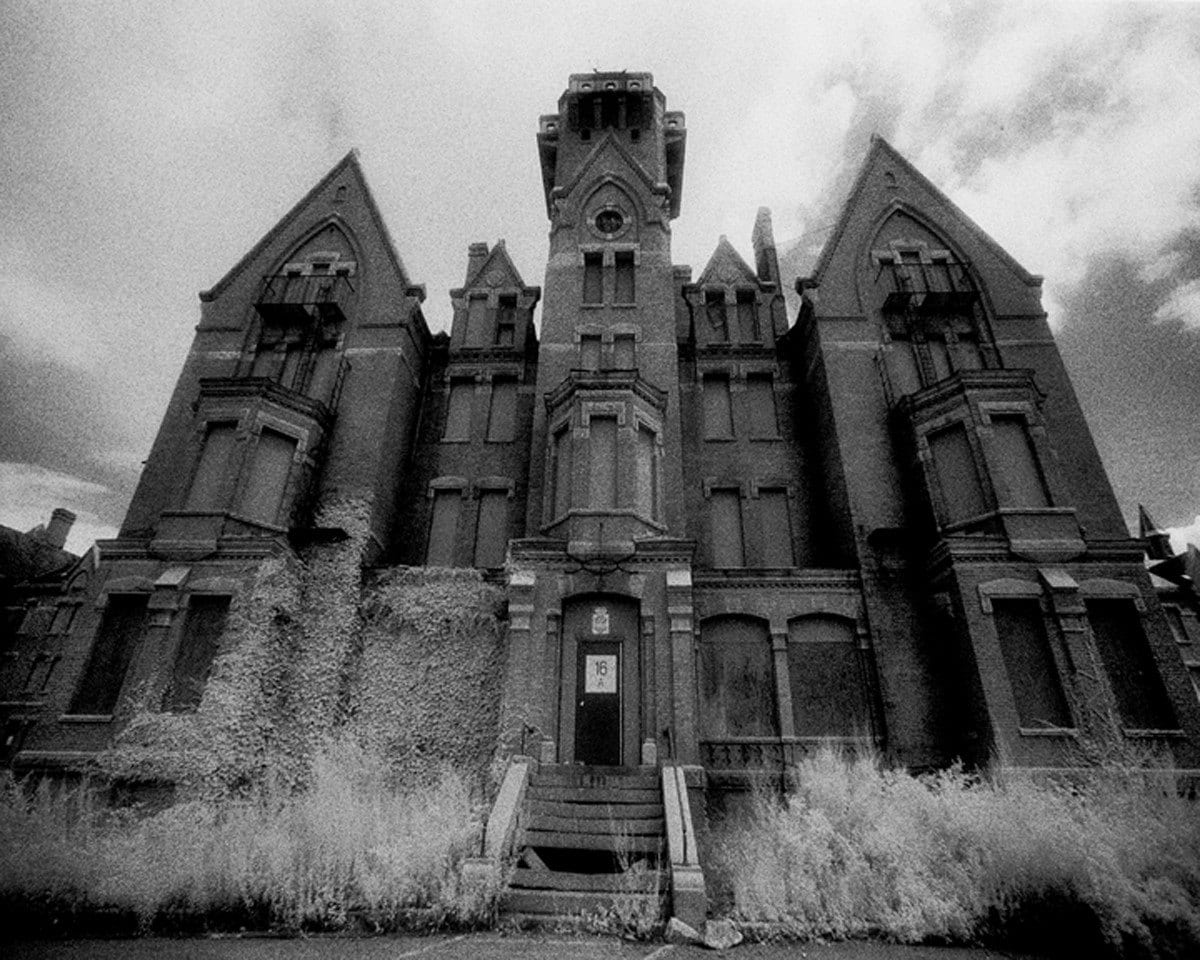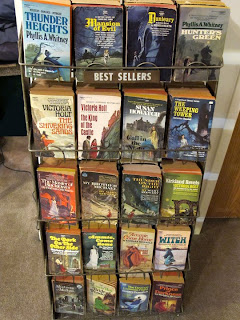A crescent moon ascends a benighted sky. A woman’s hair becomes a tangle of leafless, lifeless tree limbs. A Victorian woman navigates the forest of souls, pestered by a flock of ravens with human faces. A wide-eyed beauty strikes a formal pose, the severed head of Edgar Allan Poe in her lap.
Enter, if you will, the World of Dzaet, the Art of Pamela Hill.
One of the joys of internet social networking sites is the discovery at the click of a mouse, of something, or someone, new and wondrous. This is how I discovered Pamela Hill in the autumn of 2009 and purchased for my own, a print of the painting, Annabelle Lee.
Besides her uncanny ability to conjure deeply personal visions from the depths of her soul that resonate with people who have never met her, one of the most startling facts about Pamela is that she is completely self taught, having picked up the brush as recently as 2007, and has already made a name for herself throughout her home state of Virginia and as far away as the European continent.
Pamela, can you tell me a little bit about how you got your start. What made you decided to take up painting at mid-life, and how did you go about developing your techniques?
Well, Barrymore, in all honesty, I am not sure how I got my start. I was bored one day, and simply decided to try my hand at a painting. I had always been interested, had "dabbled" in art in my teens, but never pursued it. It was hilarious. However it was also addicting. By the third painting, I found that all of my childhood angst was being poured out on canvas. The paint was mixed with tears, and although it was emotionally taxing, something deep inside me knew that it was a path that I had to walk down. So, I walked. It was exciting, yet difficult. It opened wounds, and it healed. Those early canvases were rudimentary, yet filled with stories of my life. I never worried about technique during that time. I just wanted to empty myself of all the bottled up pain, and so I continued.

From past conversations with you, I understand how difficult it is for you to part with your original paintings, even though in less than five years you have developed a hobby into a full-time professional career. How did you come to publicly display your first painting, and how did you feel when you made that first sale?
Yes, it is extremely difficult for me to part with my paintings. For obvious reasons, I keep a canvas journal. Each and every one of my paintings are autobiographical, so when one of them finds a new home, a part of me leaves with it. Sometimes as humans it is difficult for us to give up the past, to let go of anger. At times I wanted the paintings around to remind me of how justified I was to have those negative emotions. When I do let a painting go, it is the ultimate in healing for me. I have finally reached the place where I am willing to let go of that past and forgive.
I don’t consider what I do a career, it is more of a service. Each painting touches the person that it is supposed to. The client resonates with it personally, and perhaps it begins their own road to healing. I found this when a close friend of mine "talked" me into posting a piece on MySpace, and the piece was received with messages from people who had been through the same emotional upheaval. That encouraged me to take the advice of a friend at a local art shop who had wanted me to try a show. At the first show, I found myself holding a young woman who cried her eyes out. I gave her the painting, as I realized that she needed it to begin her own path. I finally had found a reason for the suffering I had endured.
Are there any particular artists who influenced your particular style and/or any artists that you admire and strive to emulate?
I have no art history knowledge at all. I am not well acquainted with other artists, so there was no one in the beginning that influenced me. I will say though, that one woman eventually did touch me. I was in Barnes and Noble looking through their clearance table when I saw a book about Frida Kahlo. I opened the book, looked at a few of her paintings, and thought “WOW this woman paints like I do!” I had no knowledge of who she was, or that she was no longer alive. I bought the book, then the movie, and learned a lot about her. Although our styles are not necessarily the same, she was also a symbolist, and she painted her life on canvas. I have since completely resonated with her as a human being.
As I life long lover of all things Gothic, from art to film to literature, I often find myself asking: Why Gothic? Where did this inclination toward the dark exploration of the soul come from? What do you think has influenced your life and art to lean toward the types of dark and atmospheric images that appear in your work?
Yes, Barrymore, I love all things Gothic. However, I don’t purposely paint in any style. I simply use my symbols to tell a story, and my stories are dark and painful. Again, they are autobiographical. As a writer, imagine getting up every morning and writing about your personal feelings, upsets, joys, etc. That is all that I do.
Are there any particular books or films that influenced your Gothic leanings as you were growing up?
You know, I don’t really know why I love the Gothic world. My first thought would be that I love the Victorian clothing. I simply adore everything from corsets and ruffles to the beautiful architecture and furnishings. Perhaps I was alive in that era? I would guess so.
I know that many of your paintings are deeply personal. This one, Out of the Darkness and Into the Light, has been described as a self-portrait. Would you be willing to share with my readers what some of the imagery means to you?
Yes, it is a self portrait. The title gives away some of the meaning. I was lost and now am found. This particular painting was meant to show my growth in the spiritual aspect of life, thus the blue corset, which symbolizes spirituality, and the owl’s head which symbolizes the wisdom that I have gained. She is walking out of, or away from, the darkness felt from feeling alone, and into the knowledge that we are all one. All things are one, and there is never any need to feel alienated or alone. Just look around you at any given moment and know that you are surrounded by "family". She holds the light, it is no longer unattainable. She has found her place in the world, in the universe. She is content.
One last question, one I’m sure you have been asked more times than you can count, what is the meaning of Dzaet?
I love this question. The answer always reminds me of the journey that I have taken and the wondrous outcome of it. Dzaet is Armenian for the numbers 808. I was born at 8:08 in the morning, and when I picked up the paintbrush, I feel that I was re-born. Reborn into a new purpose, a new life, a new path. It seemed appropriate that I would paint under that name. After all, how much more boring could "Pam Hill" get? And for those who know me personally, I deplore boring!
One thing is certain your artwork is
never boring! Thanks so much for allowing me the opportunity to share your work with my readers. Pamela’s work can be found online at
Dzaet,
MySpace, and on Facebook at
Dzaert Art. All images included here are copyright by Dzaet, reproduced with permission.


































